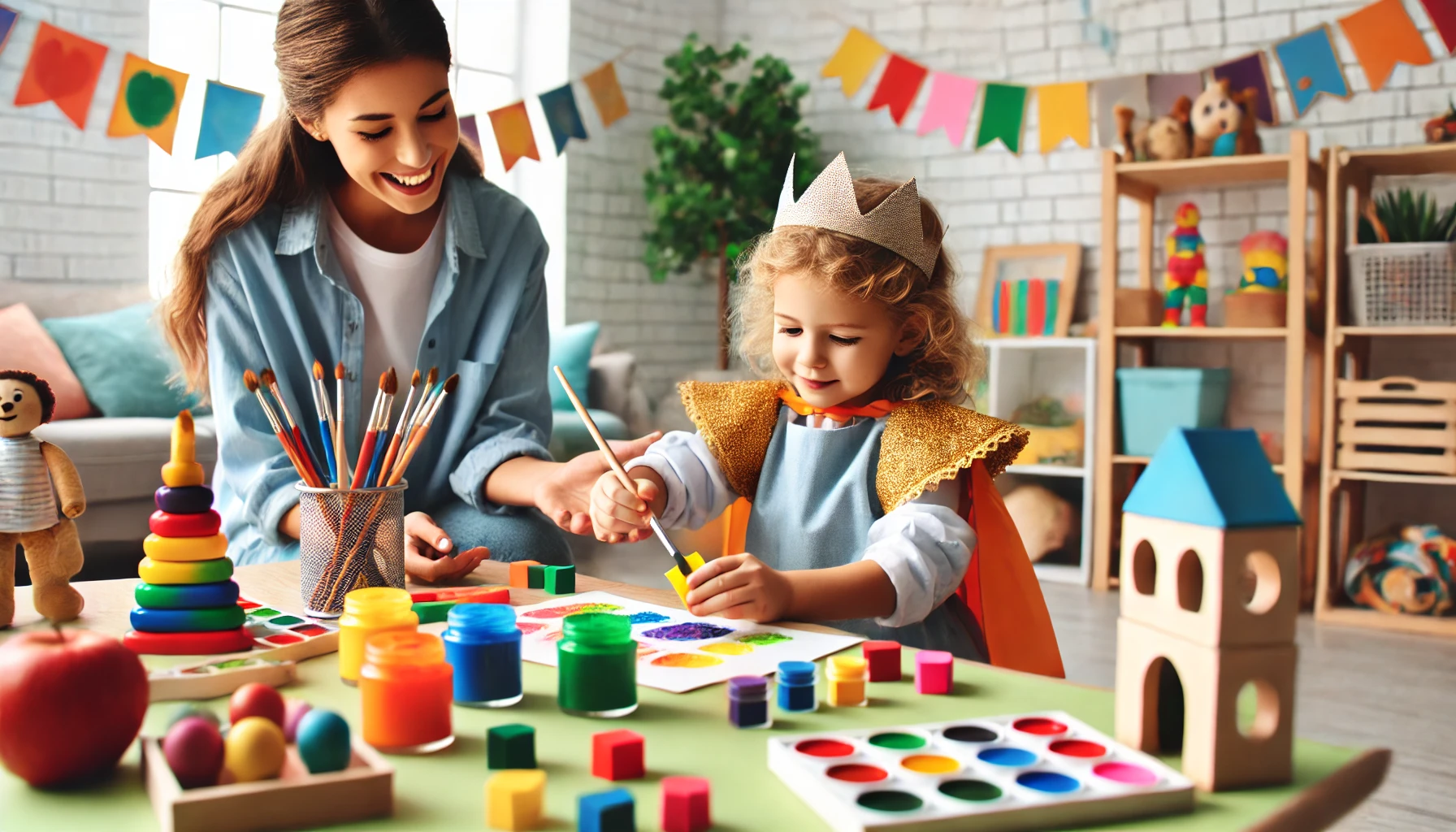How to Teach Young Children About Creativity and Imagination
Fostering creativity and imagination in young children helps them become innovative thinkers, effective problem-solvers, and confident individuals. Creativity isn’t just about art—it’s about how children express ideas, make decisions, and view the world around them. When children are encouraged to explore and create freely, they build a strong foundation for learning and emotional growth. In this article, we’ll explore fun and effective ways to nurture your child’s imagination every day.
Why Creativity and Imagination Matter
- Enhances problem-solving skills – Encourages kids to think in new ways.
- Boosts emotional development – Provides a safe outlet for feelings and ideas.
- Promotes self-expression – Helps children communicate their inner thoughts.
- Supports cognitive growth – Builds curiosity, memory, and flexible thinking.
- Lays a foundation for learning – Encourages a love of discovery and innovation.
1. Create an Open-Ended Play Environment
Open-ended toys and materials allow children to build, invent, and pretend freely.
Activity Idea:
- Provide items like building blocks, puppets, dress-up clothes, cardboard boxes, and art supplies.
- Avoid toys that do everything for the child—go for toys that can be used in multiple ways.
- Rotate materials regularly to keep their imagination sparked.
What Kids Learn:
- That they can create their own stories and solutions.
- How to think independently and flexibly.
- The joy of inventing something from nothing.
2. Encourage Storytelling and Pretend Play
Imaginary play is one of the most powerful ways kids explore ideas and emotions.
Activity Idea:
- Set up scenarios: “You’re a chef in a restaurant,” “We’re astronauts in space,” or “Let’s pretend we’re at a zoo.”
- Provide props or let them create their own.
- Ask open-ended questions: “What happens next?” or “Who else is in your story?”
What Kids Learn:
- How to construct narratives and sequence events.
- The ability to take on roles and see other perspectives.
- Language development and emotional expression.
3. Use Art as a Tool for Expression
Art is a safe, flexible way for children to explore ideas without judgment.
Activity Idea:
- Offer crayons, paints, collage materials, glue, scissors, and paper without specific instructions.
- Say: “Make anything you want!”
- Display their artwork at home to build confidence.
What Kids Learn:
- That there are no right or wrong answers in creativity.
- How to use colors, lines, and textures to express ideas.
- That their work has value and meaning.
4. Read and Invent Stories Together
Books fuel imagination and inspire children to create their own adventures.
Activity Idea:
- Read books with rich illustrations and ask, “What do you think happens next?”
- After reading, have your child draw a new ending or invent a sequel.
- Let them “read” a book aloud using the pictures as prompts.
What Kids Learn:
- How to make connections between stories and their own ideas.
- That they can be creators, not just listeners.
- The structure and rhythm of storytelling.
5. Allow Time and Space for Unstructured Play
Boredom can be the beginning of creative thinking.
Activity Idea:
- Set aside regular quiet time without screens or structured activities.
- Provide a “creation corner” stocked with open-ended materials.
- Encourage free play outside where nature becomes part of the story.
What Kids Learn:
- How to entertain themselves and explore ideas freely.
- The ability to focus on personal interests.
- The confidence to create independently.
6. Ask Imaginative Questions to Spark Ideas
Open-ended, silly, or creative questions encourage abstract thinking.
Activity Idea:
- Ask things like:
- “What would happen if animals could talk?”
- “What would you build with a magic tool?”
- “If you could make a new holiday, what would it celebrate?”
What Kids Learn:
- That thinking creatively is fun and encouraged.
- How to use their imagination to explore new ideas.
- That their thoughts are unique and valuable.
7. Embrace Messy, Experimental Projects
Creative exploration often gets messy—and that’s a good thing!
Activity Idea:
- Try sensory play like finger painting, water play, or kinetic sand.
- Build science-inspired projects like slime, volcanoes, or baking soda art.
- Allow trial and error: “What happens if we mix these colors?”
What Kids Learn:
- That experimentation leads to discovery.
- How to be curious and unafraid of failure.
- The fun in learning through hands-on exploration.
8. Celebrate Creative Effort, Not Just Results
Praise your child’s creative process to build confidence and motivation.
Activity Idea:
- Say: “I love how you used so many colors in that picture!”
- Ask: “What were you thinking about when you made this?”
- Avoid judging or correcting imaginative ideas—support their uniqueness.
What Kids Learn:
- That creative thinking is valued and encouraged.
- How to develop pride in their ideas and effort.
- That success isn’t always about the outcome, but the journey.
Final Thoughts
Teaching young children about creativity and imagination helps them explore the world with confidence, curiosity, and a sense of wonder. By giving them space to play, materials to create, and support to express themselves, parents can nurture minds that are ready to innovate, dream, and thrive—in childhood and beyond.
